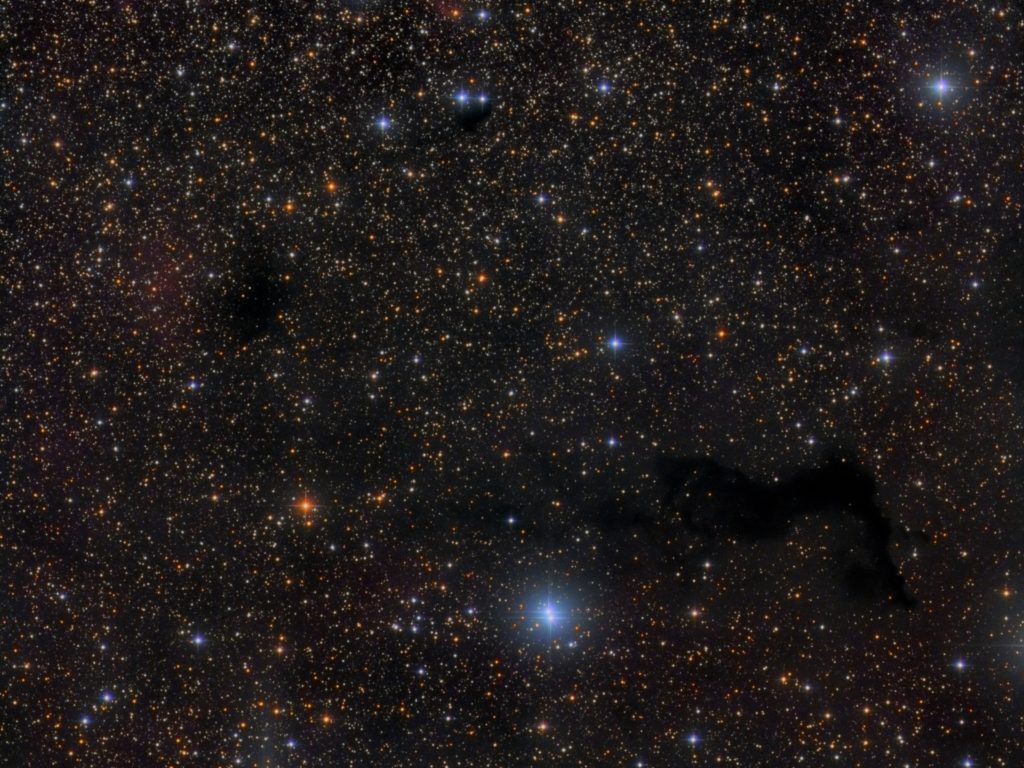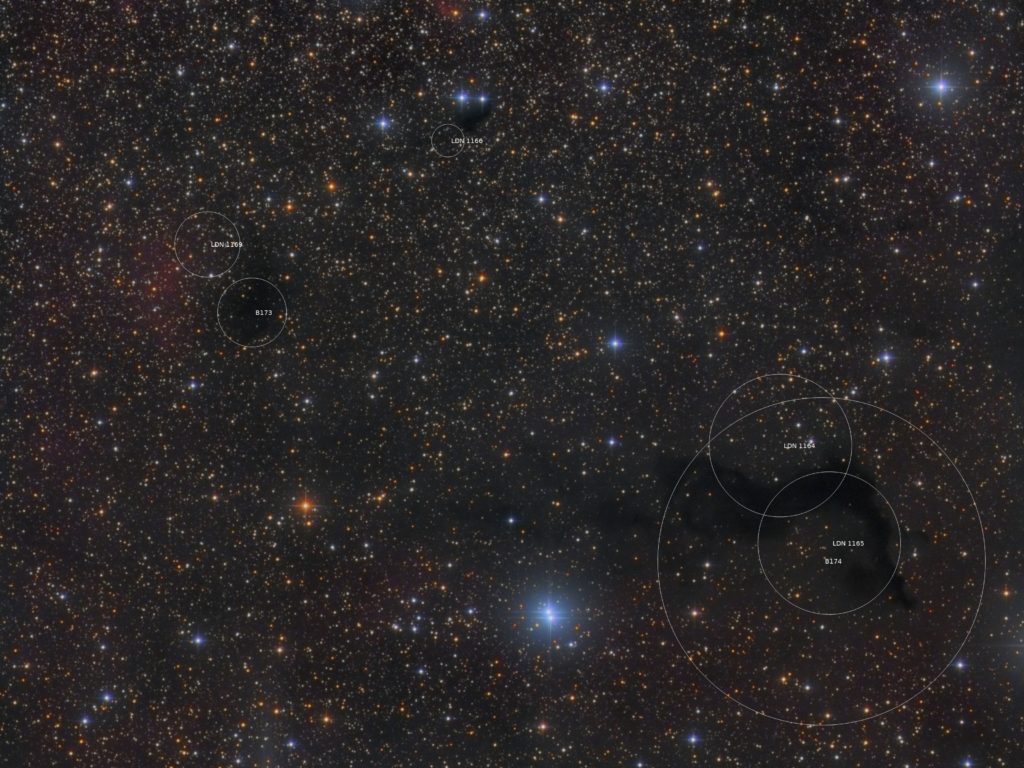Barnard 174 from my own „Sterntaucher“ observatory
In 2018, I dedicated a series of clear nights to capturing the haunting beauty of Barnard 174, a dark nebula located in the northern reaches of the constellation Cepheus. This region of the Milky Way, rich in interstellar dust and intricate star fields, has long fascinated me for its deep contrasts — where the brightness of the galactic plane gives way to mysterious shadows that hint at unseen processes of star formation.
For this project, I decided to combine the strengths of two of my telescopes: my 10-inch Newtonian, used for the luminance (L) data, and my small apochromatic refractor (Apo), which I used to capture the RGB and Hα (hydrogen-alpha) frames. This combination allowed me to achieve a detailed, high-resolution luminance layer while maintaining beautifully natural star colors and subtle emission highlights in the final image.
Barnard 174 is part of the famous Barnard Catalogue of Dark Markings in the Sky, compiled by Edward Emerson Barnard in the early 20th century. These so-called “dark nebulae” are not mere voids but cold, dense clouds of interstellar dust and gas — the raw material from which new stars are born. By blocking the light of background stars, they appear as inky silhouettes etched against the luminous backdrop of the Milky Way. In the case of Barnard 174, the dust is especially thick, forming a striking, filamentary structure that stretches across a densely populated stellar field.
Cepheus itself is a treasure trove of such regions. Lying close to the galactic plane, it offers an intricate mix of emission, reflection, and dark nebulosity, all intertwined in complex, overlapping layers. What makes Barnard 174 particularly compelling is its quiet simplicity — a single, dark river of dust winding through a field of gold and blue stars. Its subtle forms are easily overlooked in wide-field images, yet under careful observation it reveals an elegant, organic structure reminiscent of a smoke plume rising through starlight.
The image acquisition spanned several nights of excellent transparency and moderate seeing. Using the Newtonian telescope for luminance data ensured a fine level of structural detail, capturing the intricate gradients of opacity within the nebula. The Apo, with its wider field and excellent color correction, provided complementary RGB frames that brought depth and life to the surrounding star field. In addition, a series of Hα exposures were taken to accentuate the faint traces of emission that occasionally appear around the denser dust clouds, suggesting regions where star formation might be stirring.
Once the data was collected, I performed calibration and registration in PixInsight, as usual. The process involved careful alignment between the luminance, RGB, and Hα data, followed by upscaling the RGB and Hα frames to match the higher resolution of the luminance data. This allowed for seamless integration of color and structure, maintaining sharpness without compromising the natural appearance of the stars.
Processing dark nebulae is always a delicate balancing act. Unlike emission regions, where brightness and contrast guide the eye, these objects live in the subtle interplay between light and shadow. Too much contrast, and the faint texture of the dust is lost; too little, and the nebula fades into the background. Through techniques like multiscale processing, background neutralization, and local histogram equalization, I sought to bring out the depth and softness of the dark structures while preserving the vibrant colors of the stellar field.


The images were taken with the following equipment:
- Location: Krefeld, Germany
- Telescope: 10″ Newton ohne Namen – TSQ-65ED Apo
- Focal length [mm]: 1000 – 420
- Focal ratio: 3.9 – 6.5
- Mount: Skywatcher EQ8
- Camera: Moravian G2 8300 FW – Moravian G3 16200 FW
- Filter: L – R:G:B:Hα
- Exposure time [min]: 550 – 160:250:240:125
- Resolution: 1.11″/px – 2.95″/px


Leave a reply